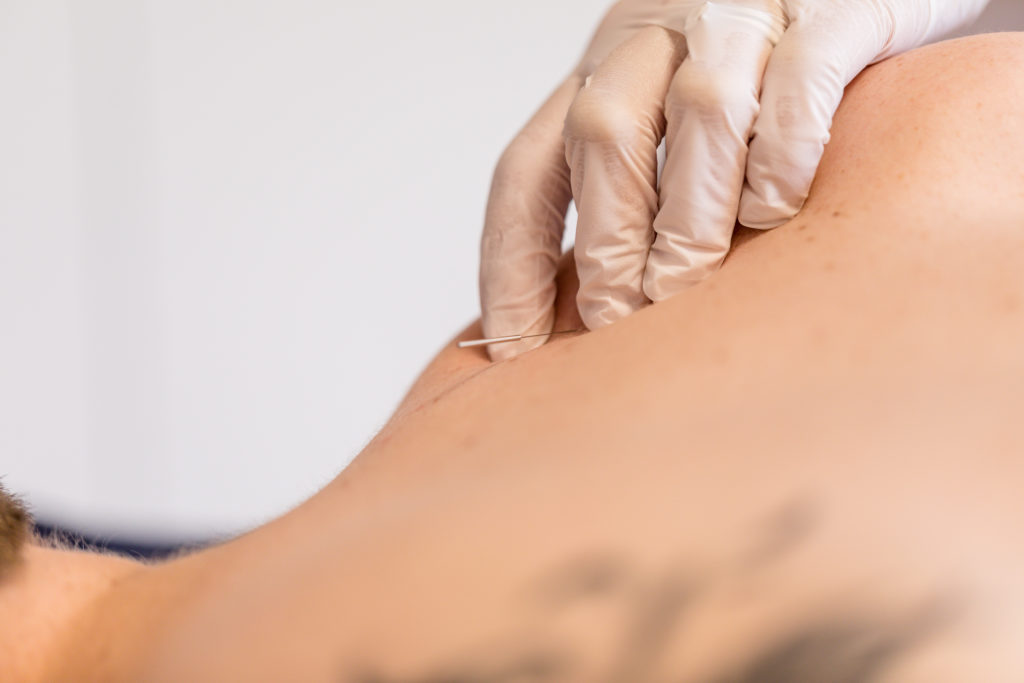Dry Needling: What you need to know

Dry needling is a treatment technique where a sterile, single-use needle is inserted into a myofascial trigger point.
“A myofascial trigger point is a compressed bundle of fibers, and is what we call a knot. A knot forms when a group of muscle fibers have shortened,” explains physio Sanchia Ferreira of Sanchia Ferreira Physiotherapy.
Myofascial trigger points
These myofascial trigger points develop when parts of your body experience quick, unexpected movements like whiplash or sustained and prolonged abnormal movements caused by stress, illness or nutritional deficiencies.
Basically, these muscle fibers have shortened when activated and have not returned to their lengthened, relaxed state. They contract, they shorten and they stay there – forming a myofascial trigger point. This trigger point presents itself as a sensitive nodule or knot in the muscle.
The muscle fibers are now super tight, compressing the surrounding capillaries and nerves in the muscle that supply the fibers with life. That’s where the pain you might be experiencing comes from.
The muscle can’t move normally anymore as it can’t obtain a fresh blood supply from surrounding capillaries and nerves. This means the muscle can’t flush out any chemicals because everything is a tight, compressed bundle of muscle fibers. Ouch.
Dry needling
Dry needling is similar to acupuncture but the difference lies in what the “use” is, explains Sanchia.
“Acupuncture uses the energies of the body. With dry needling we use the anatomy of the body in order to treat pain,” says Sanchia.
These trigger points, although they sound horrific, are actually your body’s way of protecting itself from potential or actual muscle damage. The muscle goes into a spasm to protect the muscle area from damage.
“This area – the area in spasm, the trigger point or the knot – is what we insert the the needle into,” explains Sanchia.
How dry needing works
When the needle is inserted into the trigger point, your body recognizes this as a foreign object.
“Blood pools around the needle and the contracted muscle fibers relax. This happens because cells migrate from the rest of your body, to where they notice this foreign object is,” says Sanchia.
Because cells migrate to this trigger point, fresh oxygen and nutrients are delivered to the trigger point. This allows the point to flush away any acidic chemicals which exist in the area.
“Once I remove the needle, there will be a tiny legion in the muscle. Again, the body encourages cells to come to that area to repair and replace the damaged fibers,” adds Sanchia.
The muscle fibers then relax and re-lengthen, so that normal function in the muscle is restored.
Sanchia strongly believes in the way dry needling is able to help trigger points relieve pain in her clients, to restore and repair their damaged muscles. If you experience pain in the form of knots, book an assessment with Sanchia today.






